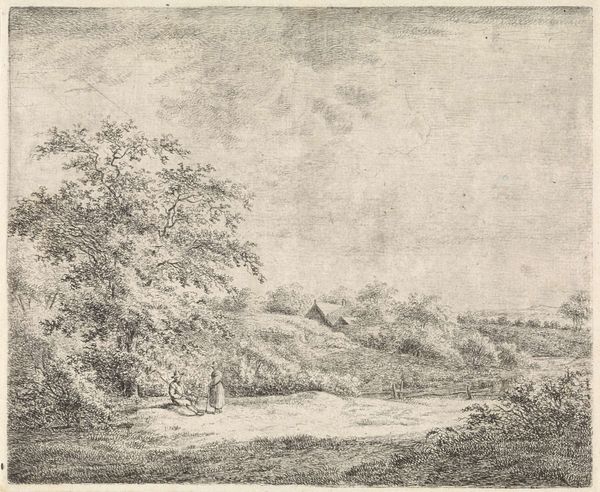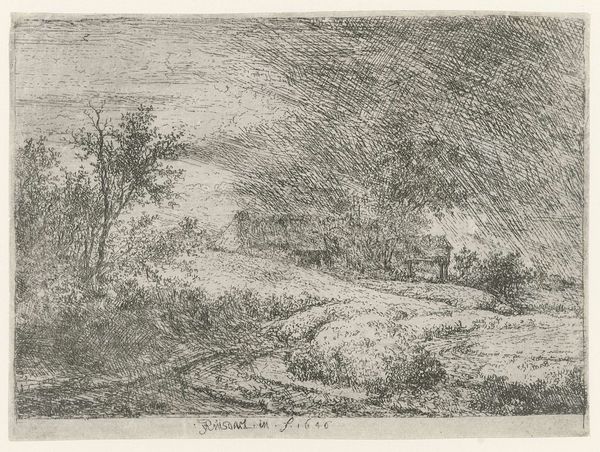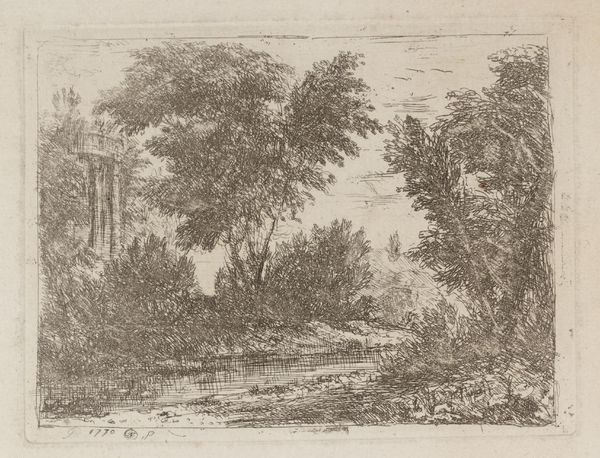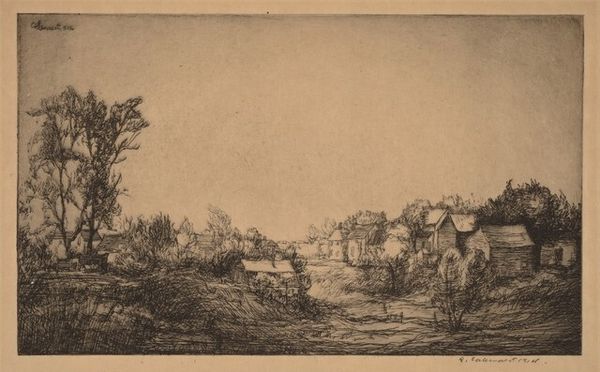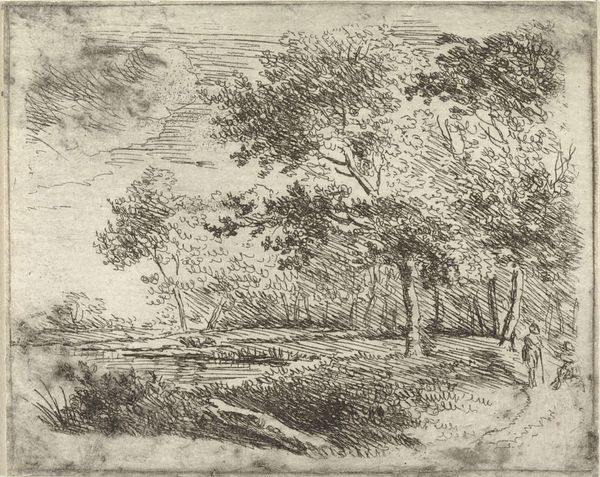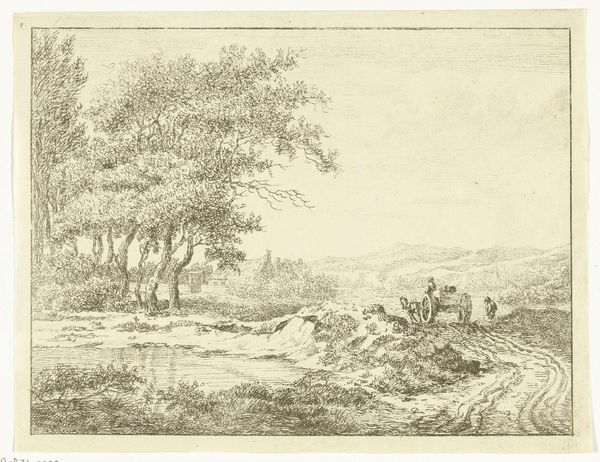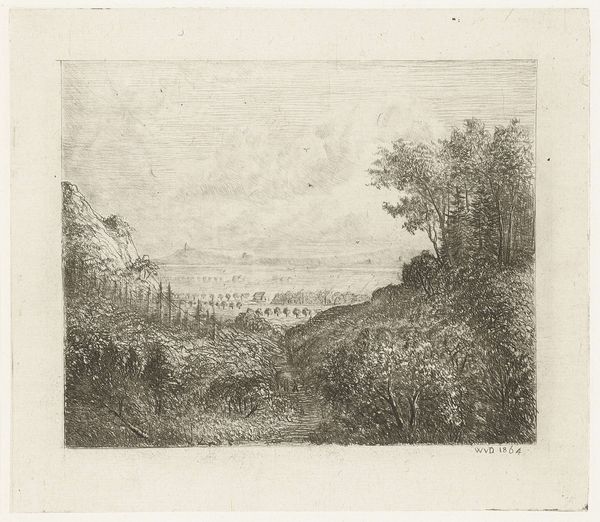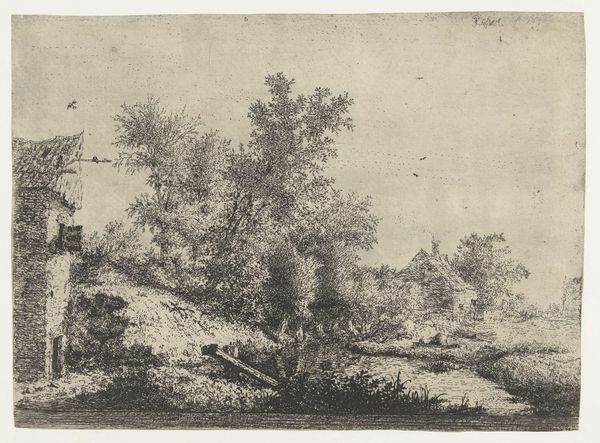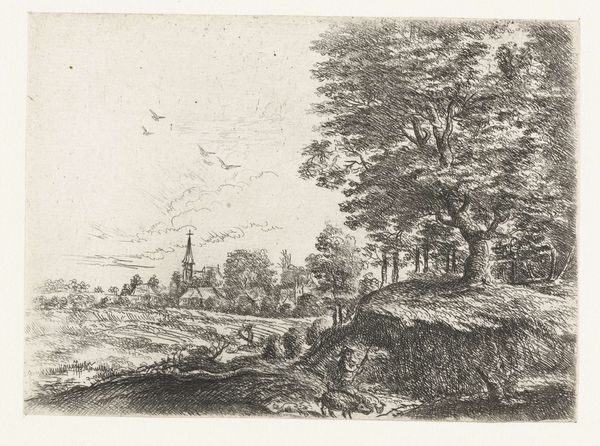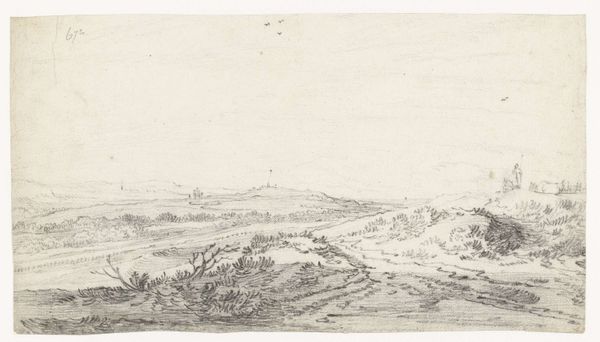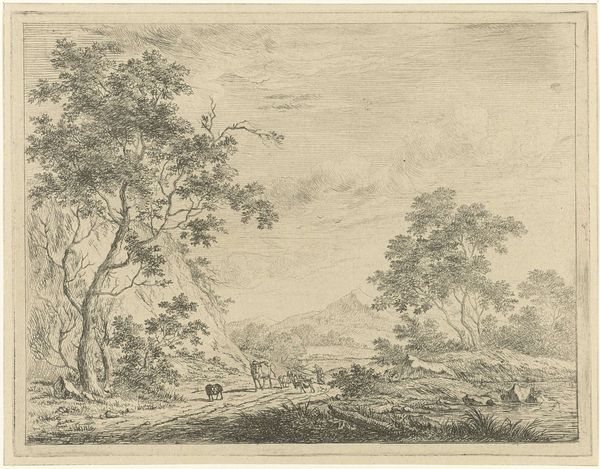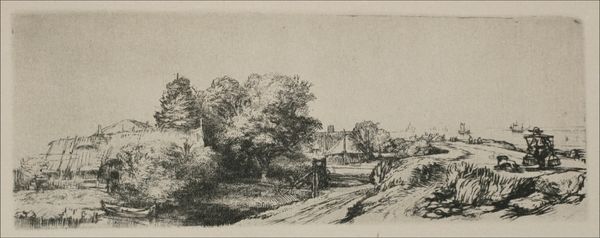
etching
#
etching
#
landscape
#
etching
#
romanticism
Dimensions: height 84 mm, width 129 mm
Copyright: Rijks Museum: Open Domain
Editor: This is "Landscape with Stone Bridge" by Willem Matthias Jan van Dielen, created sometime between 1815 and 1867. It's an etching, and has this dreamy, almost hazy quality. The bridge sits nestled between these densely etched trees. What strikes you about this piece? Curator: Immediately, I’m drawn to the process itself. Etching involves immense labor, layering acid on metal, a demanding technical skill often overlooked. How does the materiality of etching contribute to the ‘dreamy’ effect you mentioned? Consider the social context – who had access to these skills and materials at that time? Editor: Well, the etching lines are so fine and close together, creating a soft, almost blurred effect. Perhaps this accessibility you mentioned made printmaking appealing, versus painting or sculpture, and the effects it allows for, like reproducibility, democratized art to a wider audience? Curator: Precisely! Think about the romantic ideals popular then – the appreciation for nature, but also its control through elements like this crafted bridge. Etching, as a reproducible medium, enabled broader dissemination of this ideology. The labour involved wasn't just artistic; it involved the entire infrastructure of production and distribution. Consider how this contrasts with other landscapes of the time. Editor: So, by focusing on the materials and the social circumstances surrounding its creation, we see not just a landscape, but a whole network of labor and ideas. Curator: Absolutely. We uncover the complex relationships between artist, materials, labor, and consumer, challenging that simplistic view of ‘romanticism.’ What have you learned by looking at this etching this way? Editor: I've learned to look beyond the surface of an artwork, thinking about its materials, how it was made, and what that tells us about society and the people who made it possible. Curator: Indeed! And understanding art means unpacking these often-hidden aspects. It invites us to reflect on the art historical processes and materiality of an etching like Van Dielen's.
Comments
No comments
Be the first to comment and join the conversation on the ultimate creative platform.
